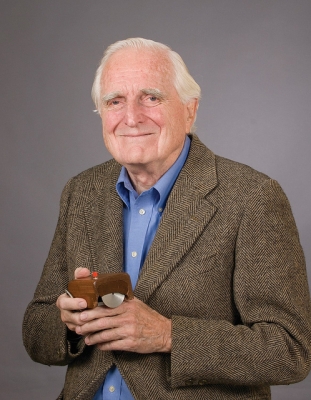
In 1888, the German-American inventor Emile Berliner (1851-1929) invented a system of sound recording that could be mass produced. He devised a flat disc, called a gramophone record. On the disc, a groove ran in a spiral from the outer edge of the disc to the centre. Side-to-side, rather than up-and-down movements of the stylus recorded and played the sound vibrations. Once one disc had been made, it could be used as a mould to make a metal die, which could then stamp out exact copies of the disc in large numbers.
Early attempts to design a consumer sound or music playing gadget began in 1877. That year, Thomas Edison invented his tinfoil phonograph, which played recorded sounds from round cylinders. Unfortunately, the sound quality on the phonograph was bad and each recording only lasted for only one play.
Edison’s phonograph was followed by Alexander Graham Bell’s graphophone. The graphophone used wax cylinders, which could be played many times. However, each cylinder had to be recorded separately, making the mass reproduction of the same music or sounds impossible with the graphophone.
On November 8, 1887, Emile Berliner, a German immigrant working in Washington D.C., patented a successful system for sound recording. Berliner was the first inventor to stop recording on cylinders and start recording on flat disks or records.
The first records were made of glass. They were then made using zinc and eventually plastic. A spiral groove with sound information was etched into the flat record. To play sounds and music, the record was rotated on the gramophone. The “arm” of the gramophone held a needle that read the grooves in the record by vibration and transmitted the information to the gramophone speaker.
Berliner’s disks (records) were the first sound recordings that could be mass-produced by creating master recordings from which molds were made. From each mold, hundreds of disks were pressed.
Berliner founded “The Gramophone Company” to mass manufacture his sound disks (records) as well as the gramophone that played them. To help promote his gramophone system, Berliner did a couple of things. First, he persuaded popular artists to record their music using his system. Two famous artists who signed early on with Berliner’s company were Enrico Caruso and Dame Nellie Melba. The second smart marketing move Berliner made came in 1908 when he used Francis Barraud’s painting of “His Master’s Voice” as his company’s official trademark.
Berliner later sold the licensing rights to his patent for the gramophone and method of making records to the Victor Talking Machine Company (RCA), which later made the gramophone a successful product in the United States. Meanwhile, Berliner continued doing business in other countries. He founded the Berliner Gram-o-phone Company in Canada, the Deutsche Gramophone in Germany and the U.K based Gramophone Co., Ltd.
Picture Credit : Google











